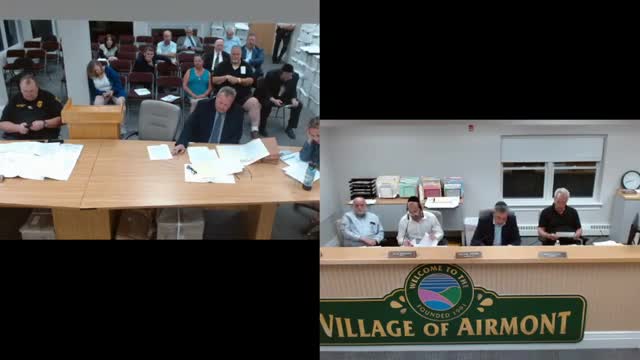Zoning Board faces backlash over controversial dormitory proposal
June 17, 2024 | Airmont, Rockland County, New York

This article was created by AI summarizing key points discussed. AI makes mistakes, so for full details and context, please refer to the video of the full meeting. Please report any errors so we can fix them. Report an error »

In a recent government meeting, officials discussed a controversial proposal for the construction of a new dormitory intended to accommodate 150 students at an existing educational institution. The proposal has been met with strong opposition, primarily due to concerns regarding compliance with zoning regulations and the potential impact on local infrastructure.
The application has been recommended for disapproval on several grounds. Key issues include the proposed building exceeding the maximum allowed development coverage by 60% and the height restrictions, as the plan includes a third story where only two are permitted. Additionally, the site would require significant variances for setbacks, with front and side setbacks falling 71% to 80% below the required minimums.
Concerns were raised about the ability of existing infrastructure to support the increased density, particularly regarding local roads, sewer systems, and stormwater management. Officials emphasized the need for a thorough evaluation of these factors, as the proposed development could exacerbate congestion and strain public utilities.
The zoning board of appeals was urged to consider the cumulative regional impacts of granting such variances, with a recommendation that the application be significantly scaled down to align with zoning district requirements. The meeting highlighted the lack of adequate parking, with the proposed plan providing only 26% of the minimum required spaces, raising further safety concerns regarding traffic flow and access conditions.
In response, proponents of the dormitory argued that the project would alleviate traffic by reducing daily student drop-off and pick-up trips. They asserted that the existing parking facilities are sufficient and that the proposed landscaping would provide an effective buffer between the dormitory and neighboring residential properties.
Despite these arguments, the prevailing sentiment among officials was one of caution, emphasizing the need for compliance with zoning laws and the protection of community welfare. The proposal remains under review, with further evaluations planned to assess its potential impacts on the surrounding area.
The application has been recommended for disapproval on several grounds. Key issues include the proposed building exceeding the maximum allowed development coverage by 60% and the height restrictions, as the plan includes a third story where only two are permitted. Additionally, the site would require significant variances for setbacks, with front and side setbacks falling 71% to 80% below the required minimums.
Concerns were raised about the ability of existing infrastructure to support the increased density, particularly regarding local roads, sewer systems, and stormwater management. Officials emphasized the need for a thorough evaluation of these factors, as the proposed development could exacerbate congestion and strain public utilities.
The zoning board of appeals was urged to consider the cumulative regional impacts of granting such variances, with a recommendation that the application be significantly scaled down to align with zoning district requirements. The meeting highlighted the lack of adequate parking, with the proposed plan providing only 26% of the minimum required spaces, raising further safety concerns regarding traffic flow and access conditions.
In response, proponents of the dormitory argued that the project would alleviate traffic by reducing daily student drop-off and pick-up trips. They asserted that the existing parking facilities are sufficient and that the proposed landscaping would provide an effective buffer between the dormitory and neighboring residential properties.
Despite these arguments, the prevailing sentiment among officials was one of caution, emphasizing the need for compliance with zoning laws and the protection of community welfare. The proposal remains under review, with further evaluations planned to assess its potential impacts on the surrounding area.
View full meeting
This article is based on a recent meeting—watch the full video and explore the complete transcript for deeper insights into the discussion.
View full meeting
